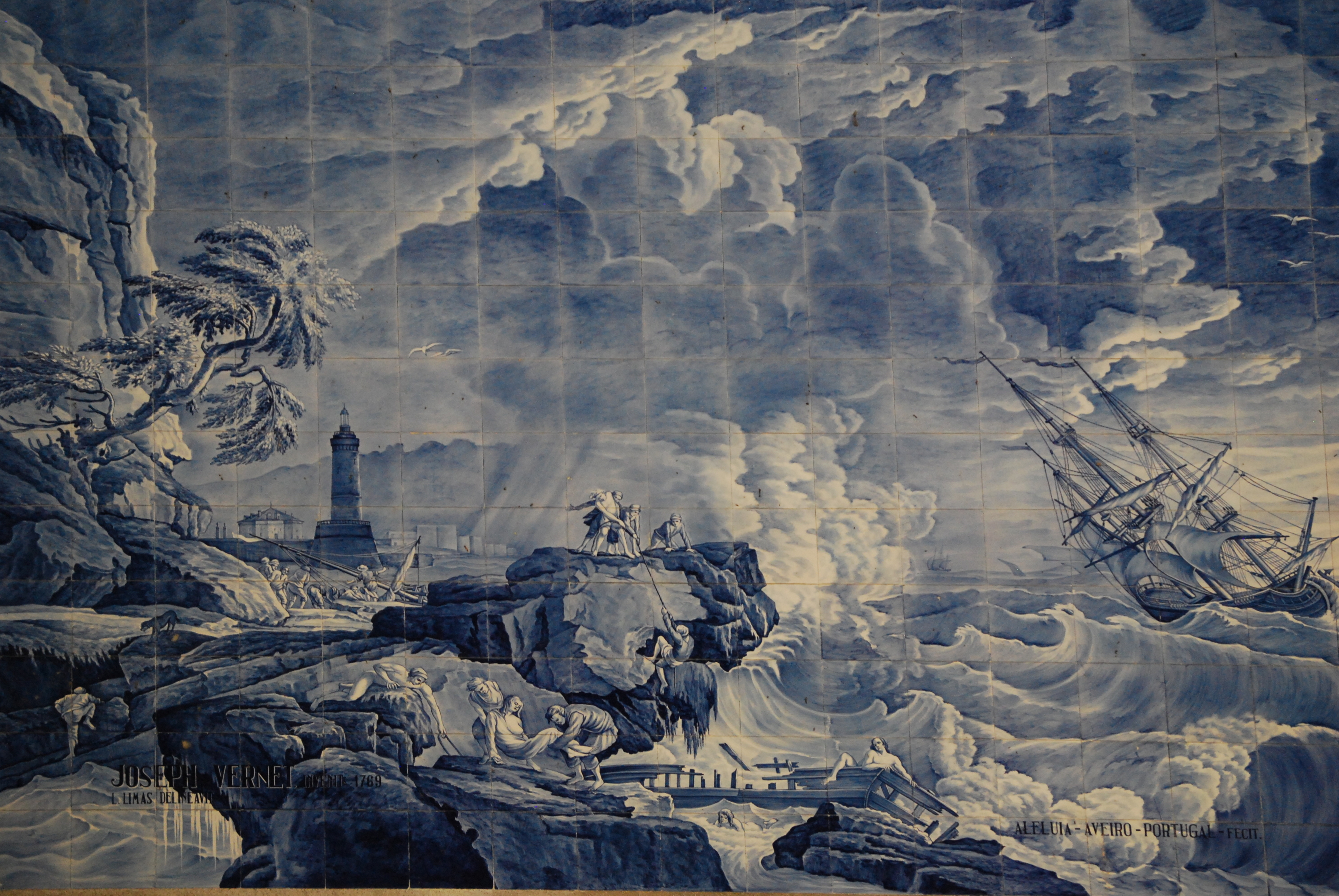Today we present a special and curious ceramic artwork: the Portuguese azulejos, a kind of European painted tin-glazed faience tilework. Derived from the Hispano-Moresque tile industry and Italian majolica, this earthenware grew in Spain and in Portugal in the 16th century and is still produced today.
This kind of azulejo panel can be found both inside and outside monuments like palaces, churches, houses, and schools. They decorate buildings and offer a means of temperature control. While there are a lot of polychromatic tile panels, this one is only blue and white to refer to precious Chinese porcelain. It was ordered by a French man from a Portuguese workshop to decorate a palace he was building in the middle of the French countryside. This palace has a big azulejos collection that reproduces landscape paintings of the 18th century.
This azulejos is a copy of The Shipwreck by Joseph Vernet. This reference and the signature of the workshop are written on the bottom. Compared to the real painting, the copy is reversed because the original picture was created using etchings, which are printed by a reversed plank. The whole image was used as a model, and the artist painted it tile by tile. It was conveyed and attached to the wall one piece at a time.
- Coraline Méric
P.S. Maritime life was a popular subject in art. See the most prominent examples here!


 Unknown Artist
Unknown Artist